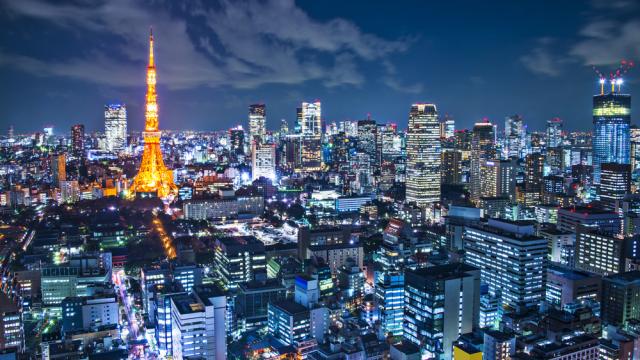In 1964, the last time Tokyo hosted the Summer Olympics, the nation revealed one of the biggest mic drops in transportation history: the debut of the shinkansen, the world-famous bullet train that became a Japanese icon. The first high-speed train in the world, it spurred similar technology to spread to Europe and other East Asian nations, paving the way for current maglev trains and, arguably, the Hyperloop.
Nations often introduce revolutionary new technology to the world at the Olympic Games. And the 2020 Tokyo Olympics will be incredible.
Tokyo is one of the most futuristic, complex, and sophisticated cities on Earth. It has the busiest train station in the world (Shinjuku station sees 3.64 million people pass through per day). It has the second most Fortune 500 companies in the world, the tallest tower in the world, and the busiest urban transport system in the world.
Emerging tech in Japan is going to change how we experience the Olympics in 2020, and could even change world.
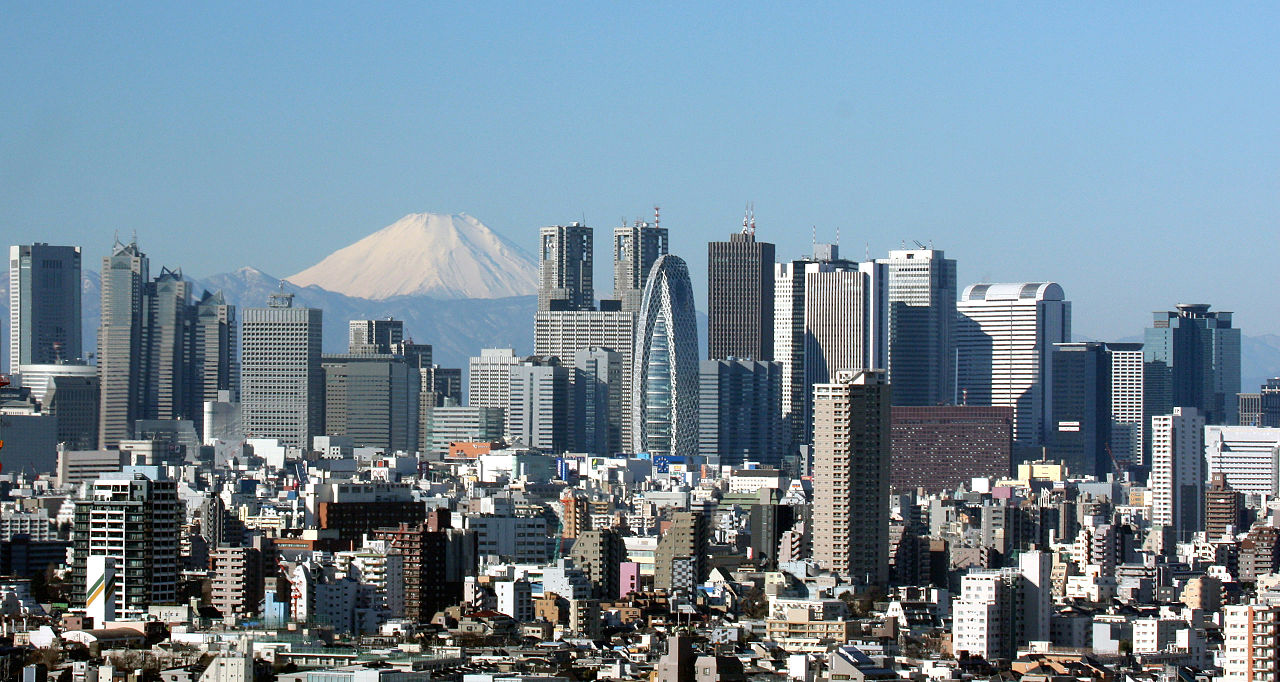
Tokyo, the world’s largest metropolis. Image: Wikicommons
1. A Village of Robots
Japan is one of the most automated nations on Earth. The major robotics industries in the US, China, Korea, Germany, France, and other countries work with — and compete with — the robot builders in Japan. So naturally, we’ll see an army of robots swarming Japan during the event. Enough to populate a small village, which is exactly what the Olympics committee wants to do.
Last week, Asahi Shimbun reported that a government committee is launching a program to install robots around the city, in “an initiative toward a ‘universal future society’ where robots and information technologies that assist humans regardless of age, nationality or disabilities are commonplace.”
This “robot village” will be in Tokyo’s Odaiba neighbourhood, which will also be home to the athletes’ Olympic Village. (It’s already home to a 60-foot Gundam Skytree.
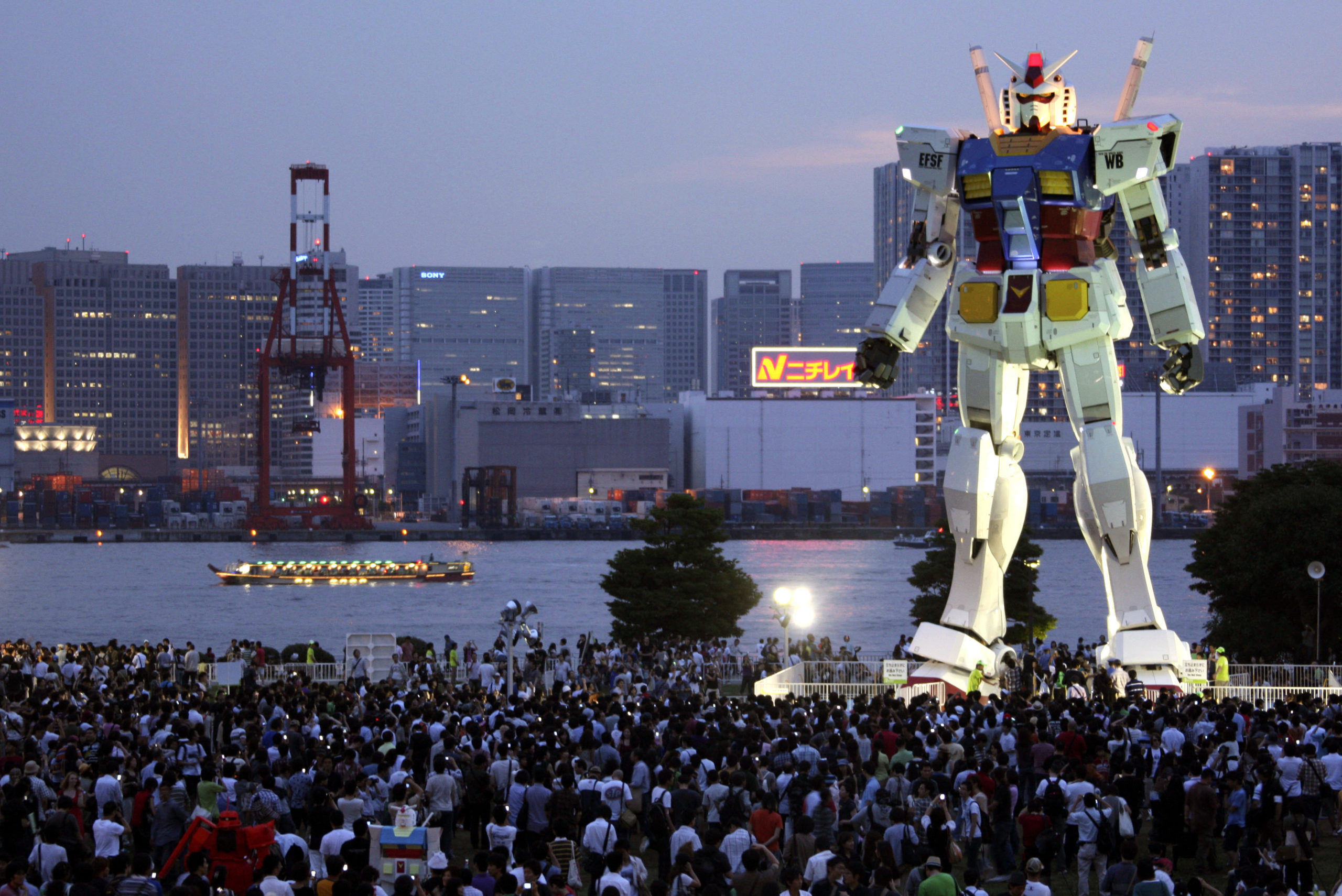
The famous 18.29m tall Gundam statue in Tokyo’s Odaiba district, seen here in 2009. Odaiba will serve as location for the Olympic Village in 2020, which the government hopes to populate with helpful robots. Credit: AP
2. Instant Language Translation
The English skill level in Japan, compared to other advanced nations, is low. And while the number of foreigners learning to speak Japanese has skyrocketed in the last decade, there’re still significant language and cultural barriers that tourists run into. That’s why Japan is rolling out cutting-edge instant translation technology for 2020.
The country’s government-bankrolled National Institute of Information and Communications Technology offers VoiceTra, a real-time translation app that accommodates 27 languages for text translation, including Urdu and Bhutan’s Dzongkha. Voice translation is a bit harder; the agency says the app understands 90% of spoken content. It covers English, Japanese, Korean, and Chinese so far and is expected to accommodate over 10 languages by 2020. The software will be available on computers and phones and at tourist-dense spots like landmarks and shopping centres and for safety, hospitals.
Meanwhile in the private sector, Panasonic is making a palm-sized gadget worn around the neck that will translate Japanese into 10 languages for the thousands of visitors set to descend on the metropolis. The electronics giant also plans to provide visitors with a smartphone app that scans Japanese signs and translates them on the spot. These are services that could be useful in countries across the globe.

Small, handheld devices from companies like Panasonic will translate phrases to Japanese on the spot for foreign visitors in 2020. Image: itmedianews/YouTube
3. Self-Driving Taxis
We’ve previously reported on the Robot Taxi plans from DeNA, the Japanese gaming giant that’s planning to get driverless taxis on Tokyo’s roads by the 2020 Olympic Games. That’s a significant achievement when some of the biggest names in tech — Google, Apple, Uber — plus car manufacturers like BMW, Toyota, and Mercedes are all scrambling to be the first to get fully functioning autonomous vehicles on the road.
But Tokyo is the biggest, densest city on planet Earth: 13 million humans, 4,600 people per square mile. Plus during the Olympics, it’s estimated a whopping 920,000 foreigners will roam the megalopolis on any given day. If Japan gets driverless taxis on Tokyo streets in time for the Olympics, it’s going to be an insane test run.

In August, Japanese companies DeNA and ZMP unveiled the new iteration of its self-driving Robot Taxis, seen here. It will hopefully be in service by the Olympics. Credit: Robot Taxi
4. TV Broadcasts in Glorious 8K
Japanese state television broadcaster NHK plans to air the Olympic Games in tantalizingly detailed 8K high definition. Just like the colour TV boom of the 1960s, Japanese companies are hoping to make the new, ultra-vivid image quality the de facto viewing on screens in Japan and beyond.
The made-in-Japan resolution, Japan Times reports, offers next-generation screen resolution: 7680 by 4320 pixels, or 16 times as many pixels as current HD. NHK has been at the definitive global forefront of 8K development, having started researching it way back in 1995. If anyone is bringing 8K to the world, it’s Japan, and it will be going gangbusters at the Olympics.
Next month, Japanese electronics company Sharp will start selling 8K TVs — at $US125,000 a pop. Clearly, those 85-inch 8K displays aren’t meant for average consumers — for now. By 2020, NHK wants those TVs in consumer homes. Maybe demand will go up once viewers get HD viewing of their favourite sports: like baseball, surfing, or wushu, all contenders for new sports to be added to the Olympics schedule in 2020.
8K TV being demonstrated in Tokyo. Credit: Japan Times YouTube channel
5. Algae As a Fuel Source
We’ve written before about the benefits of using algae as a fuel source for jets and buses, and how Japan in particular is eyeing it as an attractive energy alternate for the nuclear-nervous Fukushima region. And big global names like Boeing backing the plans, which can lead to greater commercialization worldwide.
Algae has remarkable potential as an alternative energy source. It sucks in carbon dioxide and converts it into energy. It’s preferable to other green energies that are grown on land, like oil made from corn, because it can produce 60 times more oil per acre and is relatively easy to grow. What’s more, if you stick algae plants next to carbon-spewing coal plants, the algae can actually decrease the emissions level in the vicinity, all while cranking out useable power. The problem is that Algae’s super expensive — making a litre of the stuff costs about $US2.50, and that cost needs to be closer to 80 US cents to be a viable alternative.
But Boeing wants to help Japan fly Olympic tourists to the island nation on jets fuelled by algae. As part of a consortium of over 40 organisations, including the University of Tokyo, the Japanese government, Japan Airlines, and All Nippon Airways, Boeing aims to offer algae flights on these major Japanese airlines for the millions of tourists expected to visit Japan in 2020. Which is good, since algae can cut carbon dioxide emissions by up to 70 per cent, compared to petroleum fuels.
If Boeing and the others can prove that algae can be cost efficient, effective, and useful on a scale as large as the Olympics, we could start seeing a lot more international flights running on green.
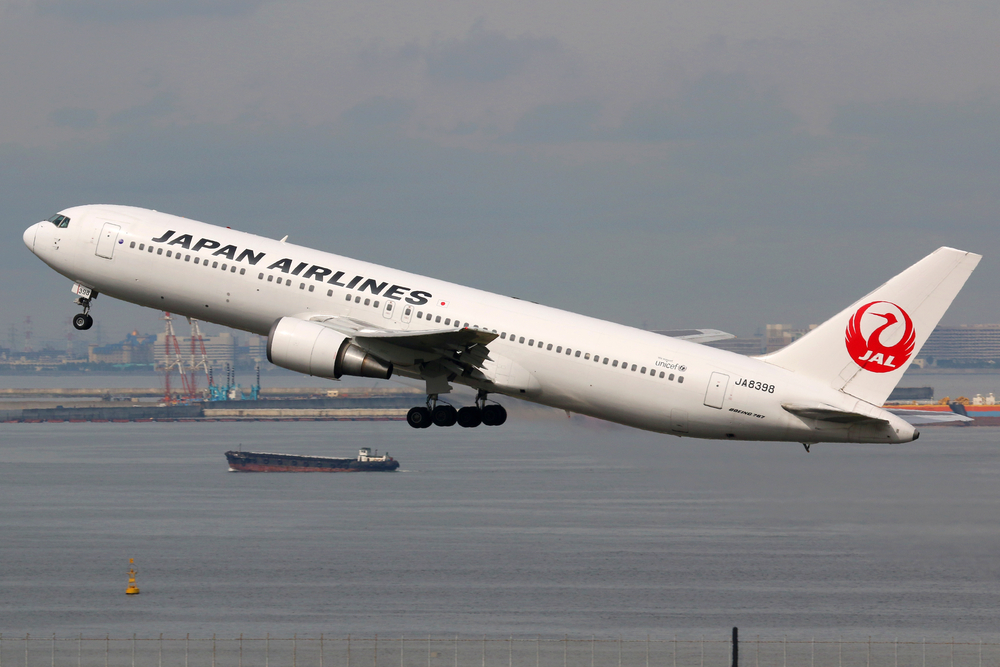
Japan Airlines is working with Boeing, the University of Tokyo, and others to provide algae-fuelled flights in time for the Tokyo Olympics. Credit: Shutterstock
6. Hydrogen-Powered Buses and Buildings
Speaking of power, Japan is rolling out another alternate energy that could be a global game-changer. It’s the most abundant element in the universe: hydrogen.
According to the Wall Street Journal, the Tokyo government plans to spend 40 billion yen ($US330 million) in the next five years to improve hydrogen energy use leading up to the Olympics, making Japan a “Hydrogen Society.” When hydrogen gas mixes with oxygen in a fuel cell, it’s able to produce exhaust-free energy, just like water can.
The plan is to make the entire Olympic Village hydrogen-powered, complete with at least 100 fuel cell-powered buses, press lounges, and athlete dorms. The government also wants 6,000 of cell-powered cars in the road, AutoBlog reports, with 100,000 on streets by 2025. There’s even going to be a giant pipeline constructed underground that will directly funnel the hydrogen into the Olympic Village. It’s part of a bigger plan for Japan as a whole to gin up non-nuclear energy sources after the Fukushima disaster.
Fuel cells are becoming more popular worldwide, and the model of using them in Tokyo 2020 could be easily replicated elsewhere, so long as governments make it a priority: To promote better air quality, the Tokyo municipal government is going so far as to spend $US385 million to subsidise purchases of Toyota’s new fuel-cell vehicles.
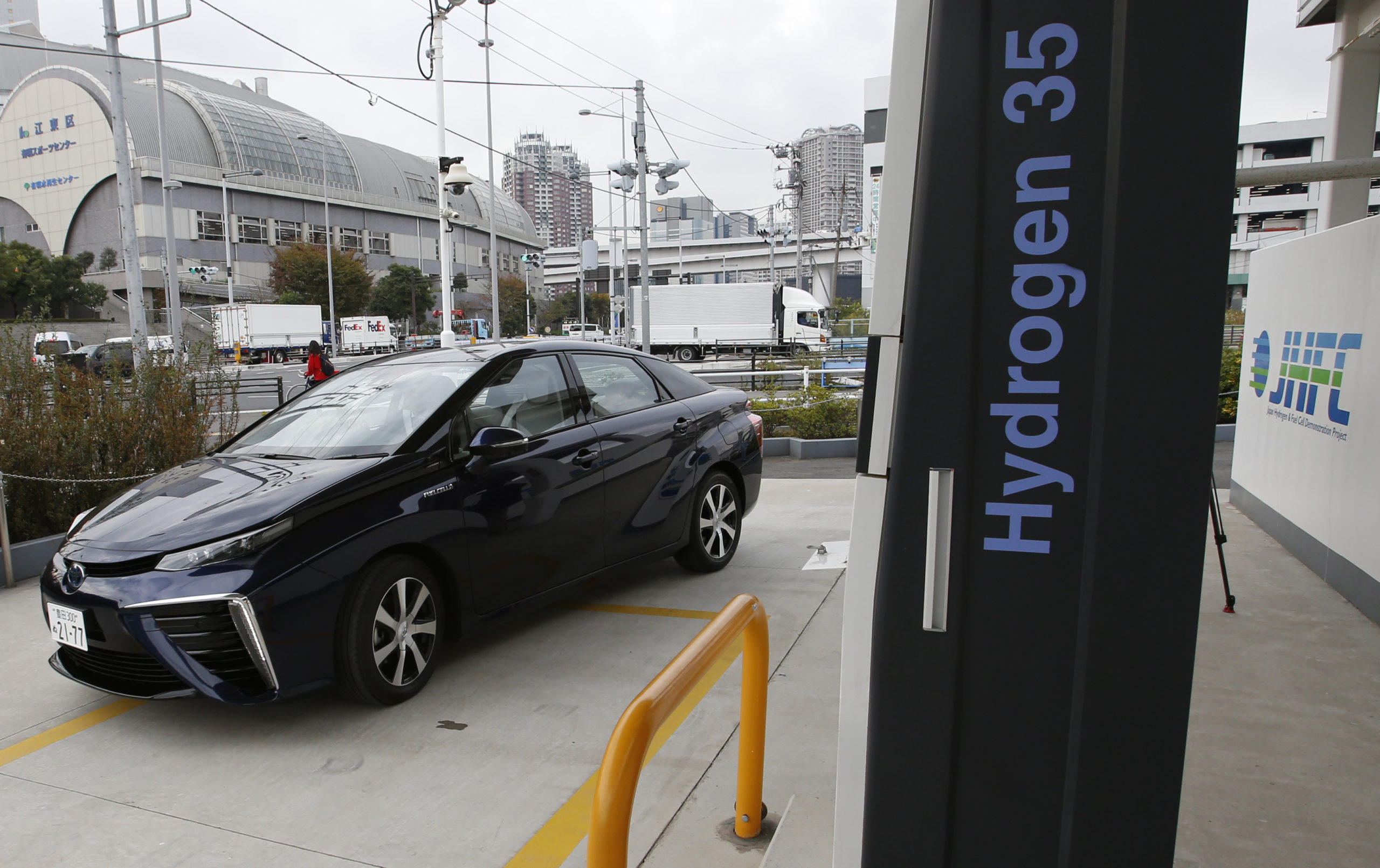
Toyota, the world’s largest auto manufacturer, debuted its hydrogen-powered fuel cell car last year, called Mirai (meaning “future”). The Japanese government wants fuel cell stations throughout Japan. Credit: AP
7. Artificial Meteor Light Shows
A Japanese astronomy startup called ALE, CNET, RocketNews24 and the Japan Times report, wants to shower streams of manmade meteors across the sky, which could make for the most badass opening ceremony ever.
ALE was launched by Lena Okajima, an astronomy professor. The idea is pretty out there — literally. The team is working with Japanese universities to design a cube-shaped microsatellite that will be launched into space and, in the world’s first project of its kind, shoot out tiny, inch-wide spheres made out of a secret material. Friction in the air will cause them to glow while racing at five miles per second. Space.com reports that there’s no worry for space junk, since the fake stars burn up upon re-entry, like real space projectiles.
Okajima says their carefully guarded chemical makeup lets them glow as much as a magnitude-3 star, making them visible from even smoggy urban centres filled with light-polluting high-rises. She wants them to mimic asteroid shower patterns that are rare in nature.

Japanese astronomy startup ALE plans to create man-made meteors
Okajima says she’ll continue working with scientists and engineers at top Japan universities to make the pie-in-the-sky idea into an actual-in-the-sky show. The individual pellets’ makeup can be tinkered with so that individual stars shine different colours. Sounds like the show would be worth the estimated $US4 million price tag. It’s also a valuable study tool: Since real asteroid showers are unpredictable and can’t be controlled, this system could allow scientists to study projectile movement and temperature while they fly through Earth’s atmosphere.
8. Even More Maglev Trains
Japan brought humankind high-speed rail with its shinkansen bullet trains 50 years ago, and now it’s eyeing next-gen rail travel: magnetic levitation. While some countries are arguably more advanced in this area — China’s operated a maglev in Shanghai for 11 years — Japan wants to bring the maglev to Tokyoites by 2020. JR Central, the railroad company that oversees Japan’s maglev train, hopes to have the train running to Tokyo in time for the 2020 Games, and then to Osaka by 2045.
Earlier this year, Japan broke a land speed record for rail with its maglev train at 602km per hour. The country’s looking to further develop its maglev system (the train’s not yet rideable for passengers), as well as expand to countries like the US, going so far as to bankroll half the cost for linking Boston to DC by maglev.
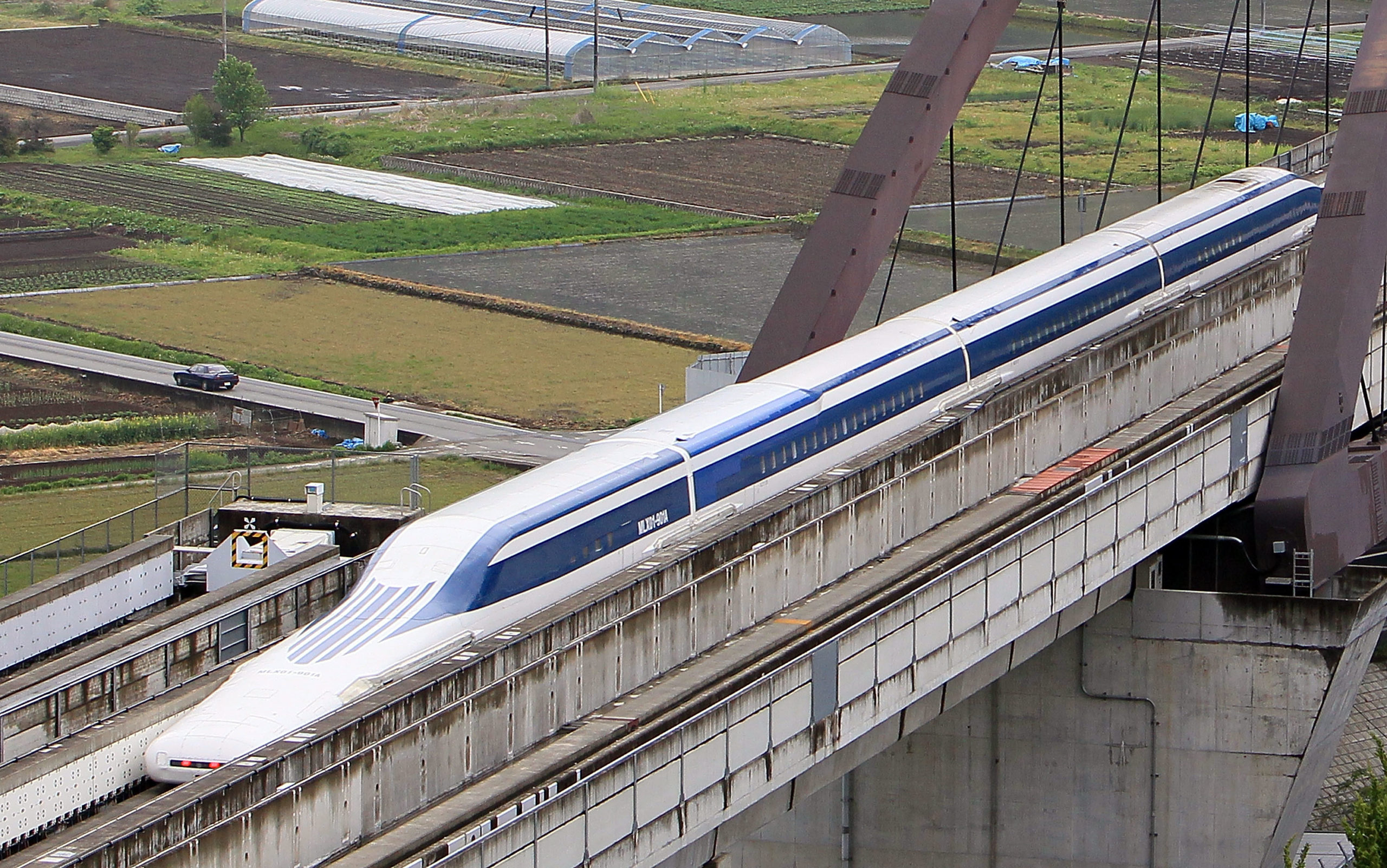
Japan’s looking to expand the network of its record-breaking maglev trains, which can hit nearly 640km/h, by 2020 — both in Japan and in places like the US. Credit: Getty
Experimental, emerging technologies are always a challenge to bring to market — throw in the logistical nightmare that is the Olympic Games and there’s plenty of reason to be sceptical of how readily available these innovations will be by 2020. We’ve already covered the Tokyo Games’ two major hiccups: The botched billion-dollar stadium and the plagiarism drama that swirled around the Games’ official logo the entire summer. For a country known for perfectionism and attention to detail, the two very public, embarrassing flubs may make the ambitious plans for 2020 seem even more far-fetched.
And yet there have been several incredible moments in Olympics history where the host nation actually debuted technologies that transformed the world. At the 1912 Olympics in Stockholm, electronic timepieces were used on a mass scale for the first time, to measure athlete performance. The event’s huge international crowd also prompted development of the world’s first PA system.
The 1936 Summer Games in Berlin took advantage of recent developments in satellite and television technology, making them the sports event to be broadcast on TV. At the 2008 Beijing Olympics, an IBM supercomputer helped predict weather and pollution. And just last month, IBM announced continued plans to use Watson-grade AI to map pollution trends in the atmosphere in Beijing and beyond.
Considering Tokyo’s status as a tech hub, we could see some of the most bad-arse engineering and technology to come out of an Olympics yet. If robots can provide great customer service during the Tokyo Olympics — a dense urban maze packed with millions of people in humankind’s biggest party — then they have a chance everywhere.
Top image credit: Shutterstock
